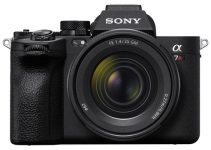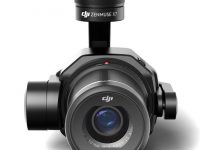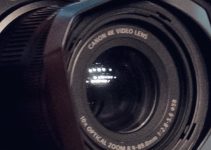The Z CAM E2-F6 and the Sony A7III are both Full Frame, High Resolution cameras that offer a lot of bang for your buck. Z CAM has been making waves in recent years with an impressive range of specialty cameras that come loaded with features and are very customizable. Sony, on the other hand, is an industry titan that has been producing video equipment since the beginning of it all.
With all that history and experience, you would think it could be easy to spot the difference between their $1,798 Sony A7III, and newcomer Z-Cam’s $3,995 E2-F6 but figuring out which is which by the images produced by these two cameras alone can be surprisingly tricky.
Join me as we dig through the clues that Mac Olink has left behind to solve this mystery and determine which is the better camera for you.
When I was a kid, I always dreamed about being a detective, a private eye who is out to crack the big case, find the treasure, and walk off into the sunset at the end with the leading lady by my side.
But since none-of-that ever happened in my life, sleuthing out a camera paradox like this one presents a challenge that I am eager to face head on, and probably the closest I’m going to get to my childhood dreams.
Less than a decade ago, the first question at any film screening was always “what camera did you use?”. We’ve come a long way in a really short period of time and have gotten to the point where it almost doesn’t really matter anymore.
Heck (and I might really show my age with this statement) the cameras we filmed with when I was in college don’t even hold a candle to my iPhone 11 Pro. Other than a few little tells, it’s really hard to guess any of these cameras apart.
A lot of that has to do with the fact that companies like Z-Cam, Kinefinity, and Blackmagic aren’t producing their own imaging chips – they purchase them from companies like Sony, or Kodak and integrate them into their camera bodies. This isn’t necessarily a bad thing.
On paper, Z-Cam’s specs look a whole-hell-of-a-lot better than any Sony Mirrorless system; however, it does allow Sony to charge a lot less for essentially the same thing their competitors are selling. But for we nerdy, pixel peeping, Sherlock Holmes wannabes, how could we ever know what’s what?
Fortunately, at 4 minutes and 31 seconds, Mac leaves us a list of clues we can use to help close the book on this enigma.
Mac’s Clues:
- Both cameras Shot In Log
- Both Cameras Were Used At Their Native ISOs
- Apertures Remained Consistent Between Cameras
- All Footage Was Color Graded In Post
Let’s break each one of Mac’s clues down to see if it can help us correctly nail down which camera is Camera A and which is Camera B.
Both Cameras Shot In Log
According to their publications, the Z-CAM E2-F6 is capable of filming with 15 stops of dynamic range with data rates up to 300Mb/s. Not surprisingly, the Sony A7III can also capture up to 15 stops of dynamic range, but only when shooting 14-bit RAW stills. In addition to that, the A7III only records video in UHD 4K at 60 10 100 Mb/s – 3 times more compressed than the E2-F6.
Since we know that filming in a log profile means we’re storing all the image information into a flat, compressed signal that requires post-correction, and that the quality of that final image is based directly on the quality of that initial compression, there is one thing that can point us to which camera is the Sony A7III and that is banding.
Image banding occurs where color is graduated (I.e. a bright blue sky), compression techniques eliminate shades leaving us without enough tones to recreate a seamless gradation. This can be found all over 8-bit footage like we get from the A7III.
Mac has stated he filmed on the Z-Cam in Z-Log2 and on the Sony in S-Log2 so this should provide us with our first clue. But sadly, none of Mac example shots were filmed with areas of high gradation, or even with any speakable amount of dynamic range. Therefore, determining which camera is which based solely off this this information is impossible.
Don’t worry though, because we have 3 more clues to help is close this case.
Both Cameras Were Used At Their Native ISO
In S-Log 2, the Sony A7III has a native ISO of 800; whereas, the Z-Cam E2-F6 has a dual-native ISO of 400 and 2500. Dual-Native ISOs lead to some increase in low-light capability, but at the higher ISO there is a reduction in dynamic range.
This could potentially lead us to our answer – if the Z-Cam had been set to an ISO of 2500, that would mean the highlights in some images might be a little more blown out. Like in this picture:
You can clearly see there is a loss of detail in the highlight on Camera B, and better performance in the shadows. This would lead me to believe B is the Z-Cam. However, without additional information it is impossible to say if that is 100% correct, and the skin tones are making me think B might be the Sony as well.
Let’s look at our remaining 2 clues.
Apertures Remained Consistent Between Cameras
A criminal master mind will always attempt to through the investigation off of the trail, and this clue seems to be nothing more than a red herring.
If he had adjusted exposure by changing the aperture, the change in bokeh would have clearly indicated which camera was which. Tightening the aperture to decrease the light increases the depth of field. The Sony, locked in at an 800 ISO, would have a greater depth of field in the outdoor footage than the Z-Cam at 400 ISO.
Mac has admittedly tricked us by maintaining the aperture and adjusting the exposure with Neutral Density filters to block out the additional light.
This leaves us with only 1 final clue.
All Footage Was Color Graded In Post
If we’re going to put this sordid tale to rest, this and the Native ISO clue is all we have to connect the dots. This goes directly to motive.
Mac states in the video that he used a REC709 LUT to correct the footage from the Z-Cam. Nothing strange about that, most displays are designed around the REC709 spec. What I found peculiar was Mac’s decision to name drop Joel Something Famularo’s LUT package for the color correction of the S-LOG 2 Footage.
You see, the gold standard look in film production is the ARRI Alexa. Nearly everyone is trying to emulate that look – the highlight roll off, the skin tones, the clarity, everything. There are a million LUTs out there that claim to offer the ARRI look, and to Joel credit his LUTs appear to be fantastic. But like all LUTs, they suffer one fatal flaw, the end-user.
Most users plop their LUTs onto their LOG footage, and sit back in amazement at their creation never realizing that all images require additional tweaking. And although Mac did a stellar job matching these two cameras, you can clearly see the blacks are a little crushed in some of the A camera examples, and some of the A camera examples color is slightly off.
This, together with the Native ISO clue leads me to believe Camera A is the Sony A7III and Camera B is the Z-Cam E2-F6.
Conclusion
My dreams of being a super sleuth were completely busted at 5 minutes and 20 seconds in the video where Mac breaks down and confesses that Camera A is the Sony A7III and Camera B is the Z-Cam E2, confirming my earlier predictions. I thought I had finally outsmarted this mastermind to have him completely mock me and all of my hard detective work only moments later.
We have so many options for cameras in today’s marketplace. This industry is flooded with cameras that all produce really good images. There are no results that can be captured from a Red, Arri, Canon, or Sony camera that can’t be duplicated with a Blackmagic, Kinefinity, or Z-Cam.
Certain projects require deliverables that can only be met with specific cameras, and some camera systems are integrated into a post workflow that is proven for certain productions and production companies but that is really it. You can get great results from ALMOST any camera, and 90% of the time nobody will have a clue what camera you used or if the story is good enough they won’t have a reason to care.
Switching to a camera like the Z-CAM E2-F6 has the benefit of a more suitable form factor, internal raw, and additional connectivity and features that aren’t offered in a mirrorless body. You’ll definitely see a marginal bump in quality and flexibility, and with a little work in post you can ALMOST fool anyone.
[source: Mac Olink]
Order Links:
Sony Alpha a7 III Mirrorless Digital Camera (B&H, Amazon)
Z CAM E2-F6 Full-Frame 6K Cinema Camera (B&H, Amazon)
Disclaimer: As an Amazon Associate partner and participant in B&H and Adorama Affiliate programmes, we earn a small comission from each purchase made through the affiliate links listed above at no additional cost to you.
Claim your copy of DAVINCI RESOLVE - SIMPLIFIED COURSE with 50% off! Get Instant Access!





